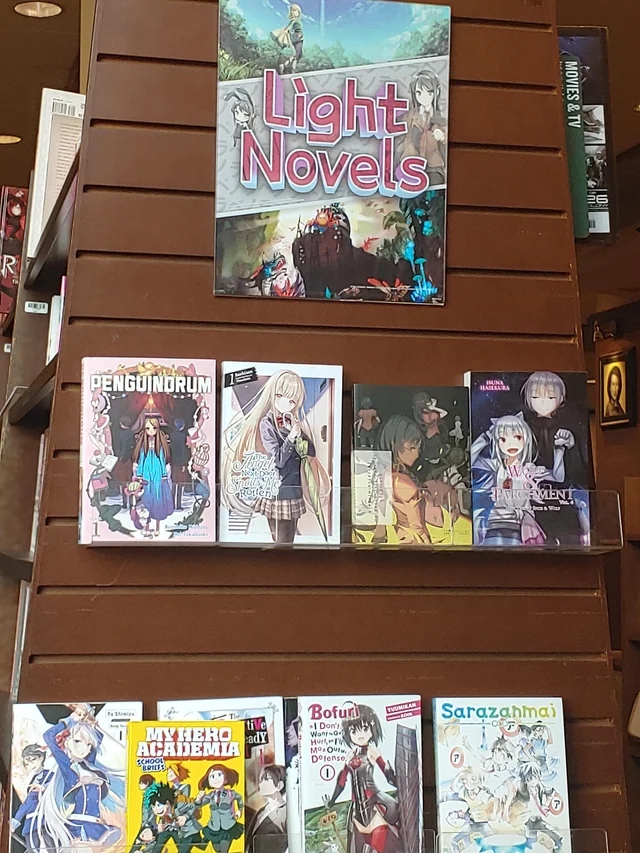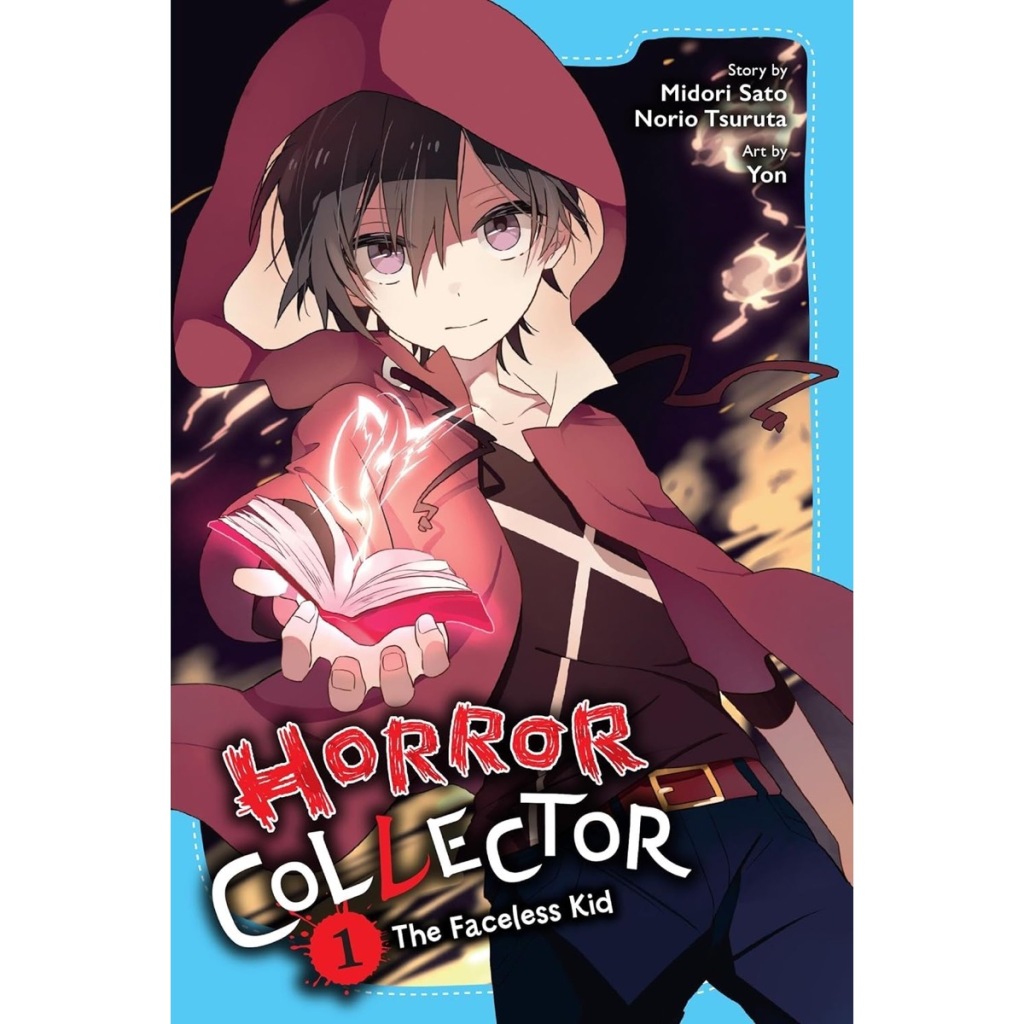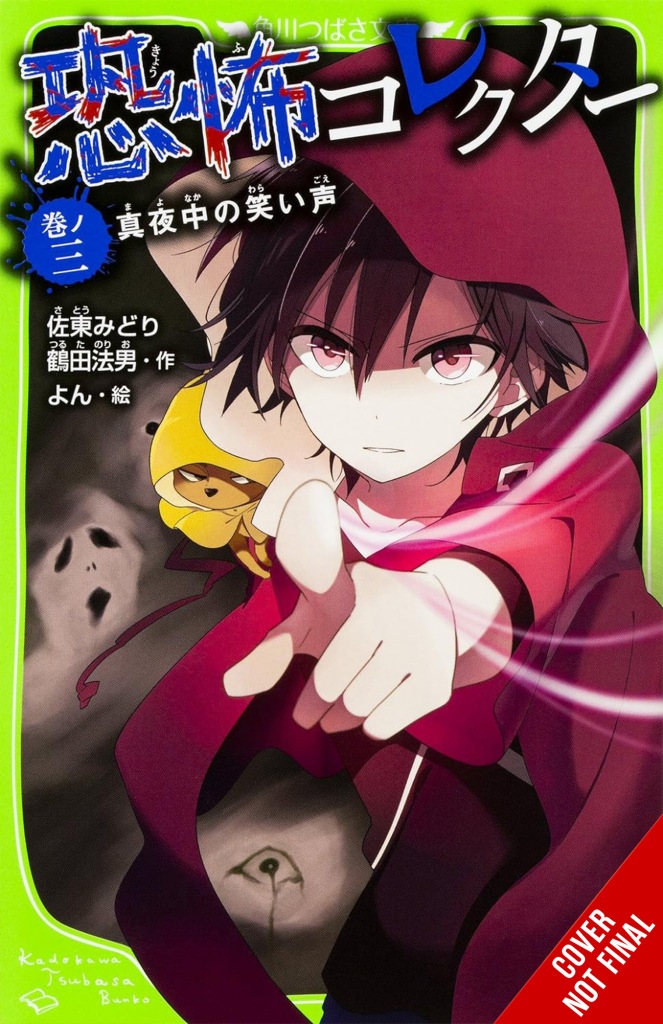
Welcome to the Forbidden Library, the newest series here on Secret House of Anime. In this series we will be exploring and reviewing various Light novels (a form of popular writing from Japan), including some of my personal favourites. I look forward to introducing more people to these often-overlooked books and to teaching about them!
For those who have never heard of Light novels before, here is a brief history of the format.
Light novels were originally developed in the 1970’s from Japanese pulp magazines, which often included articles that combined pop-culture imagery and text. These books tend to be associated with teenage and digital formats (such as web and cellphone-based works), and usually contrast with what is considered, “classical,” Japanese literary forms. Often, they are also linked to anime, manga, and video game works, culture, and imagery, and are often adapted into and from these forms.
The popularity of Light novels in the United States is surprisingly recent. While manga companies such as TokyoPop and Seven Seas did offer Light novels in the mid to late 2000’s, a combination of factors such as the manga industry crash, a lack of interest in Light novels from publishers and readers, and translation costs and challenges made the interest in publishing Light novels quickly die out. Despite being linked to many popular anime and manga series, Light novels didn’t really become a major market force in the US until Yen Press (a manga subsidiary of the Kadokawa Corporation and Hachette Book Group) formed its Yen On Light novel line in 2014. This time Light novels proved highly successful, and created a major push for other companies such as Seven Seas and J-Novel club to produce more content. Now it is estimated that there are more than twenty-four new novel releases in the US each month.
Personally, I have a real love-hate relationship with Light novels. Like manga there is a lot of material to sift through, and a lot of it doesn’t end up interesting me. Even among the few novels I have read some have turned out to be disappointing, or even downright insulting. Due to this I am very picky about what novels I read and enjoy.
It also doesn’t help that so much material is constantly coming out and many of it looks so similar. This makes it hard for fans like me to keep up with even a fraction of what is being released. Because of this constant influx of new material those who aren’t familiar with the format often find knowing where to start daunting and intimidating, especially if they aren’t already anime and manga fans.
Another major barrier for getting into the format is a lack of libraries that know about and carry Light novels. Most librarians I have talked to are unaware and/or unsure about how to approach collecting Light novels. Even librarians who are aware and enjoy Light novels tend to face barriers purchasing them for their collections due to limited budgets, space, titles available through purchasing vendors, and a lack of patron interest. As a result, most libraries carry little to no Light novels, and don’t feature them in their promotional material.
Despite all these barriers and issues though there are a number of really great Light novels worth reading. That is why I decided to create this curated series. I hope to be a guide and to share some of the (mostly) great Light novels that got me interested in the format with others, as well as many of the promising new titles coming out this year (2024). While this does mean that most novels in this series will reflect my personal tastes and will exclude many common themes found in these books such as: power fantasies, Isekai (travelling or reincarnating into a fantasy world) and traditional “high,” fantasy, ecchi and sexual content, and video game-based titles; I will still try to include a variety of books and story themes, and to make my selections and reviews accessible to newcomers. Most of all though I hope you enjoy this new series!
Horror Collector:

I am a major fan of horror content, especially horror stories. Many horror tales contain some of the most imaginative and interesting elements and narratives I have read. Ranging from urban legends, folk tales, and campfire stories going back thousands of years, to finely crafted lengthy novels filled with unusual details, suspense, and clever twists; horror has played a major role in our oral and written traditions. Horror Collector draws upon these features to create short stories aimed at young readers.
Horror Collector features stories of children encountering Japanese urban legends and folk monsters. Each story typically involves a new character encountering something odd and out of place in their world, often causing them misfortune. The only through line in each story is a strangely knowledgeable mysterious boy in a red hood who often acts as a warning to the characters about the situation they face.
What really makes this novel interesting is its use of Japanese lore. Horror Collector draws from a surprising number of sources, and included many classic creatures and stories, including a few that I was unfamiliar with. While most children reading this title probably won’t have heard of legends it uses, each story is presented in an informative, accessible, and engaging way that is easy for newcomers to grasp. One thing I really appreciated was that the stories were not watered down. Despite being aimed at children many of these tales included classic horror tropes, and were effectively creepy. I can easily see this series being an eye-opening experience for a young reader, and getting them into the horror genre. While I didn’t find most of the stories actually scary as an adult and avid horror fan, I still had a great time reading them despite not being the target audience.
Most of the characters only appear in a single short story so it is hard to say much about them. Most of the cast are stock, with many of the main characters being middle schoolers designed to stand in for the intended reader. While this is a neat feature, most of the cast doesn’t really stand out on their own or reoccur outside of their story. The one character that does appear in each story is Fushigi Senno, the boy in the red hood. His backstory is purposely left vague with little pieces of information about him parsed out in each story. In many ways he is also the stand-in for the sort of horror mascot and warning figure often found in classic anthology works such as Uncle Creepy, The Crypt-Keeper, or Montgomery Darke. While most of the characterization in Horror Collector isn’t strong, it really isn’t meant to be with the exception of Senno’s who exemplifies a nice less is more effect.
Perhaps the best and worst feature of the Horror Collector is its use of simple diction. The language used is clearly designed to be easy for a kid to read. At times this does make the stories come off as a bit barebones for older readers, but its quick and imaginative style kept me from ever getting bored. What I do have to applaud though is how the style avoids getting in the way of the subject matter, and at time actually even enhances it with a campfire like quality. While these stories aren’t filled with gruesome gore they also don’t hold back on the scary material. Despite the simple language the wording didn’t detract from the series conveying interesting and creepy subject matter. While as an adult I was not blown away by the book’s style, I clearly wasn’t the target audience and despite this still really enjoyed reading it.
Horror Collector is a great introduction to the horror genre, and Japanese folk and urban horror stories. Despite not being the book’s target audience and its language being simple, I still had a blast reading it and look forward to exploring more titles in the JY Light novel line. As a librarian and Light novel fan I would absolutely recommend it to young horror fans hoping to learn more about Japanese horror traditions. This series is one I will absolutely be reading to its conclusion, and one that I will be recommending to those who like books that are similar to Scary Stories to Tell in the Dark.











